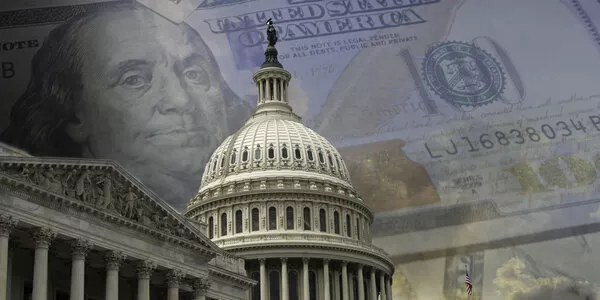
Weekly Update - Donald Trump puts pressure back on his trade policy
After some easing over the past three months, the US government has once again affirmed its intention to tighten its trade policy. Donald Trump has threatened several countries with significant increases in customs duties, to levels close to those announced on April 2 ("Liberation Day"). An ultimatum has been set for August 1 to reach trade agreements. For the moment, these announcements don’t have a significant impact on the markets. On the one hand, the prospect of an agreement remains the most likely scenario. On the other hand, markets have taken a wait-and-see approach: the tariff hikes already in place have so far had only a moderate effect on inflation and earnings expectations. These recent announcements do not change our scenario of an absorbable increase in customs duties, which would be followed by a rise in inflation and a confirmation of the slowdown in activity.
The return of trade tensions. Following the passage of the budget bill in the United States, attention is once again turning to the government's trade policy. Indeed, Donald Trump announced on July 7 i) again a very significant increase in customs duties for a series of countries as of August 1, including Japan and Korea to 25% which is their level of April 2, ii) an increase to 50% on the tariff rate on copper and iii) an ultimatum on August 1 to reach a trade agreement with the others great economies, on pain of reinstating the customs duties of April 2. The US president has also threatened to increase tariffs on pharmaceutical products to 200% if companies in the sector do not relocate a larger part of their production to the United States.
Financial markets are not very responsive. Unlike the sharp corrections that followed the announcements of 2 April, the recent statements have not had a major effect on the markets. Indeed, the S&P 500 was flat on the week and was up 7% for the year. Sovereign yields were also little changed, with the 10-year Treasury yield hovering around 4,3%. These moves reflect high market expectations that a trade deal will be reached between the U.S. and major economies, including the European Union, by Aug. 1, which could keep the effective average rate at 13%. The good performance of the markets also reflects a certain wait-and-see attitude on the part of investors due to the moderate impact at this stage of the already effective tariff increases on inflation (2,4% in May) and on the upward expectations of revenues for large companies, particularly in the technology sector.
A scenario of absorbable price increases. We maintain our scenario of a tariff hike that remains absorbable, leading to a slowdown in US growth. The recent announcements seem to constitute a new phase in the negotiations, without leading us to revise our forecast of an effective tariff rate of around 13%. Indeed, in the first place, one of the objectives of the increase in customs duties is to increase the revenues of the federal state to compensate for part of the loss of revenue due to the reduction in corporate taxation, within the framework of the approved budget. With an effective rate of 13% on all imports, companies should continue to import, thus allowing the State to collect its duties. Beyond this threshold, imports are likely to contract more significantly, limiting potential revenue gains for the U.S. Treasury. In addition, the increases in customs duties already implemented should result in a slowdown in activity, already visible in household consumption, from a pace of 3% at the end of 2024 to a rate between 1.5%-2% in 2025 and an increase in inflation towards 3% in the coming months. A return to an effective tariff rate of 25% would bring the economy close to recession with a stronger rise in inflation.
Other highlights of the week
In the highlights of the week, we chose to talk about Trade balances of France and Germany and about figures of european industrial production
Trade balances of France and Germany
The trade balance remained relatively stable in May, with a deficit of 7.6 billion euros (80 billion over one year). Both exports and imports recorded their second consecutive month of contraction, with -0.4% and 0.2% respectively over the month. By type of goods, the French deficit continues to reflect a deficit in the trade balance of manufactured goods (6.4 billion euros in May and 64 billion over 12 months), with a deterioration in the trade balance of capital goods. In Germany, the trade balance widened in May, with a surplus of 18 billion euros compared to 15 billion for the month of April. However, this improvement in the trade balance mainly reflects the contraction in imports (-3.8% month-on-month for total imports and -2.4% for non[1]energy imports). Export momentum remains weak (-1.4% month-on-month) with a general decline in exports of manufactured goods after export frontloading.
European industrial production
Industrial production data for May continue to show contrasting situations between France and Germany. Indeed, French industrial production contracted by 0.5% over the month, thus recording a second consecutive month of decline. Among the categories, the industrial production of durable goods, including automotive, fell by 1% over the month and the production of non-durable goods, including pharmaceuticals, recorded a decline of 1.6% over the month. Industrial production is thus down over the year. In Germany, industrial production continues to show signs of recovery, with growth of 1.2% on the month, above consensus expectations. The increase in May mainly reflects the growth in the production of capital goods (+4.1% in May). German industrial production is thus up in the first 5 months of 2025, reversing its trend of recent years;





